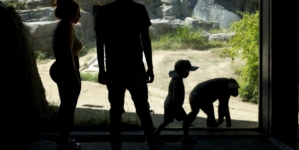-
Tesla stock price sinks as Musk and Trump feud over spending bill - 10 mins ago
-
2025 Gold Cup Odds: Mexico Slightly Favored Over U.S. Ahead Of Semifinals - 18 mins ago
-
Court in Thailand suspends prime minister over leaked phone call with Cambodian official - 23 mins ago
-
Woman Wonders Why Senior Dog Lies in One Spot—Then Has Tearful Realization - 40 mins ago
-
From Pure Flavors to Bold Innovations - 58 mins ago
-
Real Madrid vs. Juventus: Preview, odds, how to watch, time - about 1 hour ago
-
SparkKitty mobile malware targets Android and iPhone - about 1 hour ago
-
Jessica Pegula loses in first round upset at Wimbledon - about 1 hour ago
-
Woman Sees Stray Cat in Yard, Husband Discovers Her Elaborate Safety Plan - about 1 hour ago
-
New Hope for a Reversal Amid Declining Wine Production - 2 hours ago
Homelessness declined in Hollywood, but not Skid Row, study finds
Homeless encampments were markedly reduced in Hollywood and Venice last year, but the number of people sleeping “rough” without a tent, vehicle or makeshift shelter held steady, raising the likelihood that the gains will be harder to sustain in the future, a new Rand report concluded.
The total number of unsheltered homeless people was down 15% overall in the three areas Rand studies, the first decrease since the project began in 2021. But the declines — 49% in Hollywood and 22% in Venice were partially offset by a 9% increase in Skid Row.
The report authors pointed to a likely positive effect of public policies that have increased permanent and interim housing, particularly Mayor Karen Bass’ Inside Safe program, but found that those left behind pose a greater challenge.
“Rough” sleeping represented about 40% of the total unsheltered population in the count, taken in December 2024.
“Tent dwelling is no longer the typical modality of homeless life in Los Angeles,” said lead author Louis Abramson.
“We are seeing this picture where there does seem to be real progress in bringing people off the street but the people who are still on the street are the most vulnerable,” Abramson said. “The acuity indicators are not trending in the same way as the numbers. People’s level of health, well being and connectivity is not improving and is in some ways deteriorating.”
The report is the third released annually by the Los Angeles Longitudinal Enumeration and Demographic Survey (LA LEADS), conducted by Rand’s Center on Housing and Homelessness.
The findings are consistent with preliminary results for the 2025 point-in-time count released in March by the Los Angeles Homeless Services Authority. Based on raw counts, the agency projected a countywide decline of between 5% and 10% in unsheltered homelessness.
LAHSA announced Monday that it will release its final results of the count July 14.
Rand’s report represents a more intensive examination of three areas considered homelessness hot spots. Researchers return every two months to track changes over time. They count individual tents, vehicles, makeshift shelters and people sleeping unsheltered. Using a methodology similar to LAHSA’s, they estimate the number of people occupying each type of shelter to calculate total populations.
The report found “good reason” to link Hollywood’s dramatic decline to a series of Inside Safe operations conducted there last year, but the record was less clear in Venice, which also saw a decline without having any Inside Safe operations. The effects of enforcement under the city’s section 41.18 anti-camping ordinance were less clear. The report found that an estimated 12% of Skid Row’s unsheltered population had been cited under the ordinance yet the area’s homeless population increased.
“Thus, crediting changes in unsheltered homelessness to specific programs—or understanding the relationship of those changes to new inflows of people—requires more study,” the authors wrote.
Another factor in Hollywood’s dramatic improvement could be the efforts of a Los Angeles County Department of Mental Health pilot project called Hollywood 2.0, which helped bring county mental health services to the area, coordinated outreach and was a force behind the opening of two new housing projects, a 50-bed interim shelter and 90-bed board and care home.
“I think Hollywood 2.0 was a strong contributor to the decrease in usheltered homelessnes,” said Brittney Weissman. executive director of Hollywood 4WRD, a nonprofit that conducts community engagement for the project.
A demographic survey accompanying the count found disconcerting trends related to the growth of “rough” sleeping. Respondents reported staying in the same location for shorter amounts. That finding was consistent with “increases in sanitation and other encampment resolution efforts—most common in Hollywood—that either move unsheltered people indoors or periodically displace them, leaving a more transient, mobile, and dynamic population,” the report said.
Overall, 91% of respondents in all three areas expressed interest in being housed, but only 38% reported being on a wait list. Only 13% reported being offered supportive housing, while 39% were offered group shelter. Fewer than 50% accepted.
People ages 62 and older and those earning less than $99 per month were significantly less likely to be searching for housing than younger people or those with higher incomes.
The report highlighted differences between the three areas.
Those in Venice reported slightly higher levels of education rates of Social Security and disability benefits and income, and were more likely to be employed.
Skid Row’s unsheltered population skews older and more female and Black compared to the other areas. They reported being less likely to be working, more likely to report mental health, physical health, and substance use disorders, more likely to stay in the same location for three years or longer and less likely to be forced to move by law enforcement or housed residents. Of the remaining tent encampments, 80% were in Skid Row.
The authors made two recommendations: To sustain the positive trend, policymakers should continue to prioritize and streamline the creation of permanent housing. And, they need new strategies for the changing demographics.
The trend to rough sleeping will likely further strain service providers and outreach teams as their clients become more mobile and vulnerable, and encampment-based housing initiatives will become less effective.
Though rough sleeping remained steady last year, it had inched upward over the three years of the study.
“There are strategies that are bringing people successfully off the street,” Abramson said. “But for these other populations it looks like we are going to need to develop specific strategies that are not in our toolkit right now.”
Source link































